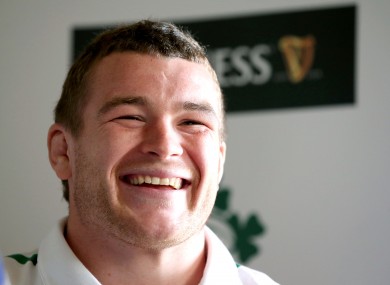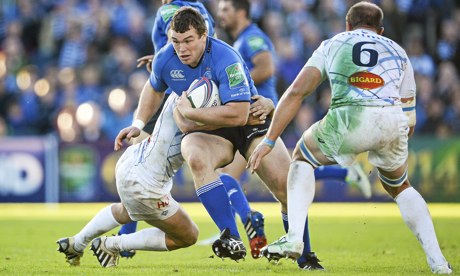There have been a number of calls for this over the past few months from both northern and southern hemisphere players. While there are a lot of obstacles in the way, specifically the inability to play in the southern hemisphere during their summer, I believe that a resolution, or at the very least, a comprise can be reached.
Their solution consists of moving the summer test window to July, allowing Super Rugby to play through, and for European rugby finals to finish with time to spare for these tests.
One key advantage of the mooted change is that their would be less club v country rows, with the recent example including Northampton's fine by the PRL for allowing George North to play for Wales outside the international window, the lack of the Argentinian players who play for Premiership clubs against Italy INSIDE the window, and the fact that some of the England side will be playing in the final of the Premiership instead of the first test with New Zealand next summer.
I don't think this is enough.
One way to completely synchronise the calendars, and to eradicate any club v country rows is to completely separate the club and country playing times. Each international window would be back to back in each hemisphere, and would overlap. Then each hemisphere is free to do what they want in regards to the club season.
One reason for the Northern Hemisphere teams to do this is to allow their players come together for extended periods of time, similar to what the Southern Hemisphere teams experience now, save for a few weeks back for Super Rugby playoffs after the June internationals. This means that the standard of international rugby should increase, given that teams will be able to spend more time together.
Assuming that no competition wants to be scraped, and none want to shorten or reduce the number of teams it involves (even though this would make things so much easier), the current set up is:
Northern Hemisphere:
Pro 12 and Premiership need 25 weeks to complete, plus another 2 for breaks in between the playoffs.
Top 14 needs 29 weeks.
6 Nations needs 7 weeks including the breaks in between,
Heineken Cup needs 9 weeks.
Add in the summer and winter test windows and that's a total of 49 weeks in a 52 week year. In years with a World Cup, which takes 7 weeks, one of the international windows is closed, which means that rugby takes up 53 weeks in a 52 week year. Clearly a problem here. This is why some of the domestic competitions play during the 6 Nations and Winter internationals.
The main obstacle for an integrated calendar is that by separating internationals with club fixtures, you'd need a lot more weeks in a season. (Hence saying that it would be easier for some competitions to shorten.)
Southern Hemisphere:
Super Rugby 21 weeks as it currently stands
The Rugby Championship 8 weeks
Grand total of 30 weeks, with summer and winter tests gives 36 weeks.
My solution is this:
 |
| For bigger image, click here |
The Northern season would end here and start again in late July, while Super Rugby would be moved so that it starts in mid July until late November. Their season would start up again in February with the ITM Cup and Currie Cup a few weeks before the internationals. The difference in the Northern hemisphere season would be that instead of stopping in November and February/March for internationals, they would continue and the finals would be held in February.
So how would this benefit Ireland? You may have noticed in the Southern Hemisphere that I've left out the ITM and Currie Cups in the list of weeks. This is because those competitions are played during the international windows. This means that all of the Super Rugby players are involved, except for a few who play for their international teams. This both strengthens these competitions by still having quality players playing alongside exciting youngsters, but also allows fringe international players stay match fit should the need for them to be called up arises.
Why would that benefit Ireland? Simple, I propose that the UBL is played over the periods when Ireland are on international duty. This both strengthens the club game in Ireland, gives the club players and young academy players vital exposure to those on the fringes of the national side, who are also kept match fit in case of any injuries.
The Junior competitions would be moved to try and maximise their playing potential for senior teams, which means they are kept away from the ITM Cup and UBL, and from the start of the domestic seasons when the international players will still be on holiday / pre-season like they currently do.
In World Cup years, the international tours could be scraped and the international window would be reorganised, minimising disruption elsewhere.


.png)
.png)
.png)

